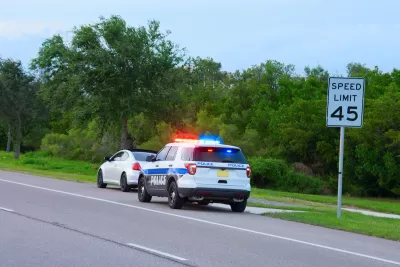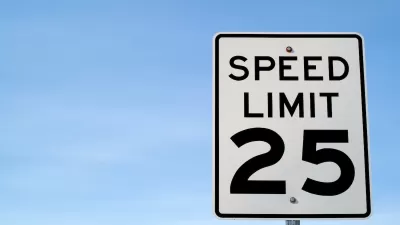Drivers sometimes defend speeding by arguing that it is safe as long as other drivers are also speeding. This argument only makes sense in the context of a limited-access highway.

As street safety advocates have repeatedly pointed out, speed kills: in particular, a pedestrian struck by a car going 40 miles per hour is far more likely to die than one struck by a car going 20 miles per hour.
But I’m not sure how many motorists realize this. A common perspective was once stated by a relative of mine: “Speeding isn’t dangerous. What’s dangerous is when one person is going more slowly than everyone else.” For example, when other drivers are going 60 miles per hour, and one person is going only 30 miles per hour, the fast drivers might be more likely to rear-end the slow driver, because they are expecting the slow driver to go at their speed. Thus, fatalities are least likely when everyone is driving 60 miles per hour.
This argument might make sense in the context of a limited-access highway. On such a highway, it is reasonable for a driver to expect all road users to be traveling at roughly the speed limit (or maybe even a little faster). Moreover, a lower speed limit might have fairly modest safety benefits, because even a motorist struck by someone going slowly by highway standards (that is, 40 or 50 miles per hour) is still reasonably likely to die or be seriously injured.
By contrast, other types of streets are full of slow-moving, vulnerable road users: not just pedestrians and cyclists, but also cars that are slowly turning into a store or intersection, or cars stopped waiting for a light to change or waiting to yield to oncoming traffic. In such a situation, it is not practical to expect everyone to go the same speed, and a reasonable driver would be aware of this fact. It logically follows that on regular streets full of walkers and stopped cars, speed kills: that is, a street where drivers go 40 miles per hour is likely to be the site of far more death and injury than a street with slower traffic.

Planetizen Federal Action Tracker
A weekly monitor of how Trump’s orders and actions are impacting planners and planning in America.

Congressman Proposes Bill to Rename DC Metro “Trump Train”
The Make Autorail Great Again Act would withhold federal funding to the system until the Washington Metropolitan Area Transit Authority (WMATA), rebrands as the Washington Metropolitan Authority for Greater Access (WMAGA).

DARTSpace Platform Streamlines Dallas TOD Application Process
The Dallas transit agency hopes a shorter permitting timeline will boost transit-oriented development around rail stations.

Renters Now Outnumber Homeowners in Over 200 US Suburbs
High housing costs in city centers and the new-found flexibility offered by remote work are pushing more renters to suburban areas.

The Tiny, Adorable $7,000 Car Turning Japan Onto EVs
The single seat Mibot charges from a regular plug as quickly as an iPad, and is about half the price of an average EV.

Supreme Court Ruling in Pipeline Case Guts Federal Environmental Law
The decision limits the scope of a federal law that mandates extensive environmental impact reviews of energy, infrastructure, and transportation projects.
Urban Design for Planners 1: Software Tools
This six-course series explores essential urban design concepts using open source software and equips planners with the tools they need to participate fully in the urban design process.
Planning for Universal Design
Learn the tools for implementing Universal Design in planning regulations.
Municipality of Princeton
Roanoke Valley-Alleghany Regional Commission
City of Mt Shasta
City of Camden Redevelopment Agency
City of Astoria
Transportation Research & Education Center (TREC) at Portland State University
US High Speed Rail Association
City of Camden Redevelopment Agency
Municipality of Princeton (NJ)






























